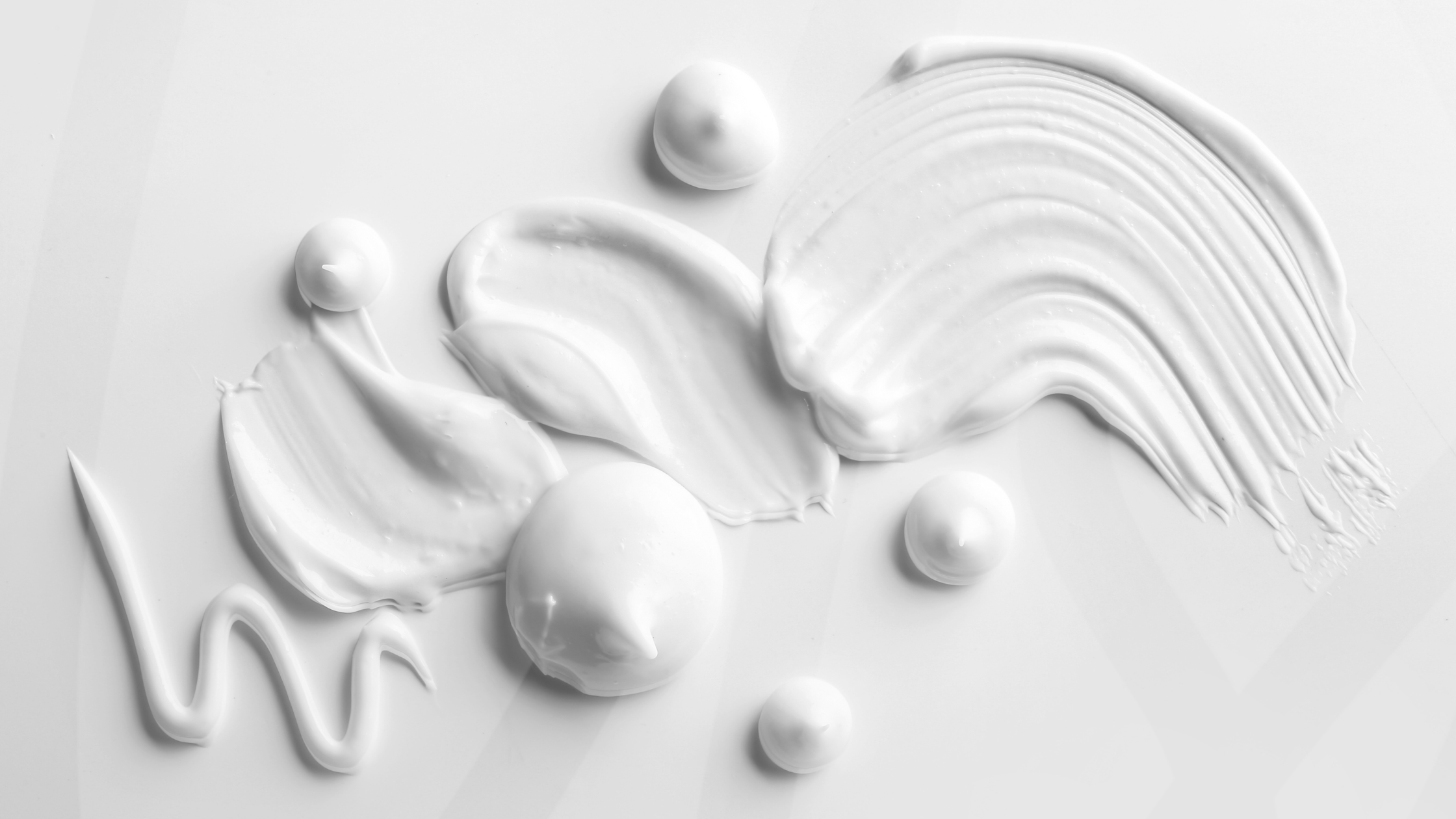Achieving an effective skincare regimen for oily skin can be challenging, as each person’s skin responds uniquely to seasonal changes and environmental factors. It can also happen that products once effective may no longer deliver the desired results, leading to a frustrating cycle that could negatively impact our skin’s overall appearance. In this article, we will explore in detail the causes behind oily skin, its seasonal changes, characteristics and all the essential steps to maintain its health and balance.
- Why Do I Have Oily Skin?
- Characteristics and Manifestations of Oily Skin
- Oily Skin’s Response to Seasonal Changes
- Skincare Routine for Oily Skin – Essential Steps
- Conclusion
Why Do I Have Oily Skin?
Oily skin is the result of excessive sebum production, the natural oil of our skin, caused by hyperactivity of the sebaceous glands. Like many conditions, predisposition to oily skin can often be hereditary. Hormonal fluctuations, especially during adolescence, pregnancy, or the menstrual cycle, can increase sebum production, as can periods of heightened hormonal activity in men. A diet rich in sugars and fats can also contribute to oilier skin, including overconsumption of packaged or processed foods, dairy, processed meats, pastries, and fast food. Psychological and emotional stress, with its peaks and irregularities, should not be underestimated, as they tend to stimulate sebaceous glands to produce more sebum in response to the release of cortisol, the stress hormone. Lastly, using overly aggressive or unsuitable products can deplete the skin and worsen sebaceous gland hyperactivity as a defensive response.
Characteristics and Manifestations of Oily Skin
Oily skin is easily identifiable by a series of distinctive visible and tactile characteristics. It often presents with an excessive shine, particularly in the T-zone (forehead, nose and chin). Pores tend to be enlarged and more noticeable, giving the skin a thick, uneven texture. This skin type may also exhibit clogged pores and redness in specific areas due to the accumulation of sebum and dead skin cells, creating a favorable environment for bacterial growth and inflammation.
? Combination Skin and Oily-Related Symptoms
Combination skin features a mix of oily, dry and/or normal areas. Typically, the cheeks and areas around the eyes can be dry or normal with a matte, flaky surface and a feeling of tightness, especially after cleansing. Comedones (blackheads and whiteheads) often concentrate in the T-zone, while the rest of the face may remain relatively blemish-free or tend toward dryness and flaking. It’s also possible to experience the opposite, with dryness and flaking in the T-zone accompanied by redness and irritation, while other parts of the face show comedones and clogged pores. This skin type can fluctuate between periods of oiliness and dehydration, responding variably to climatic or environmental changes.
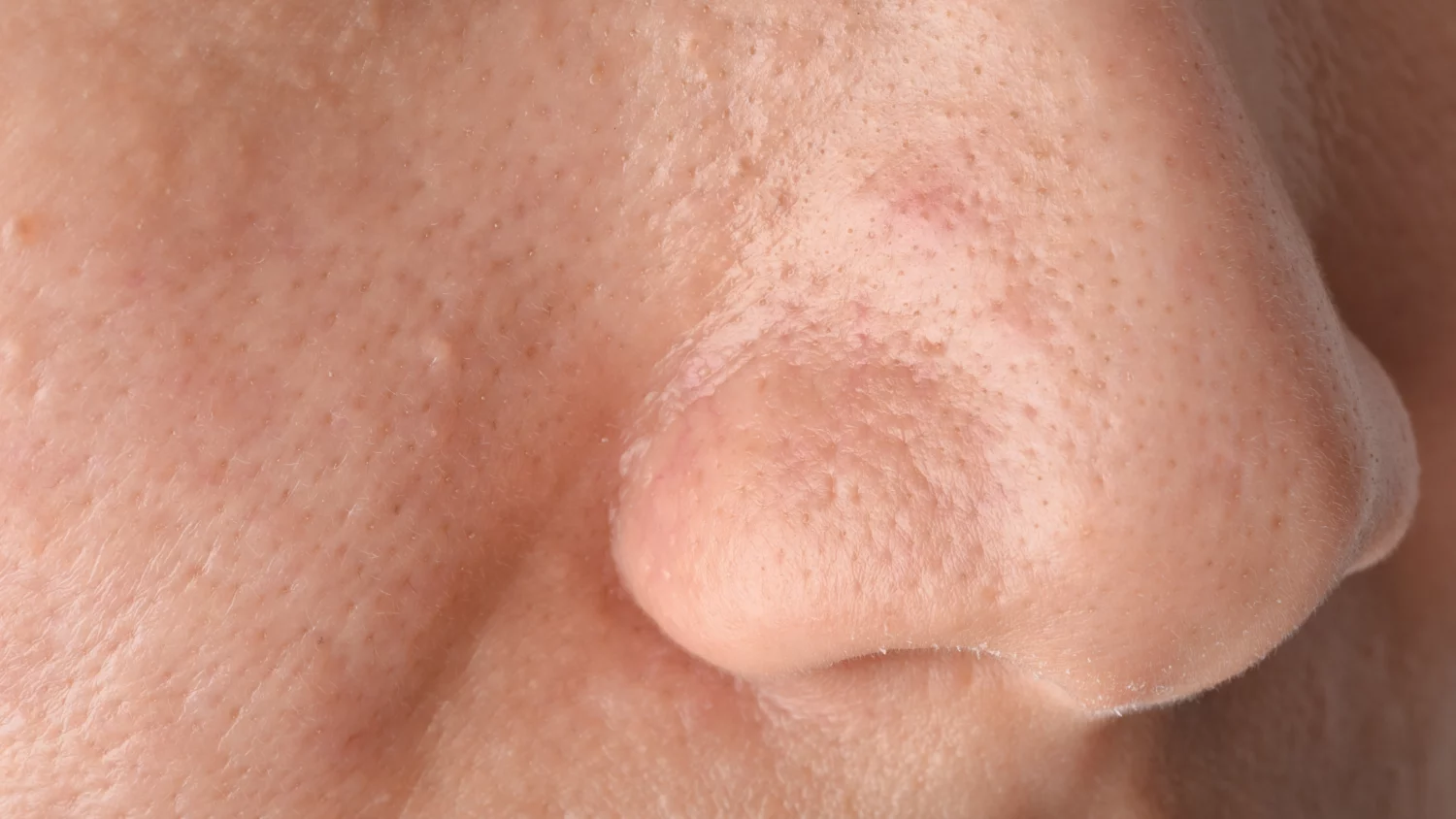
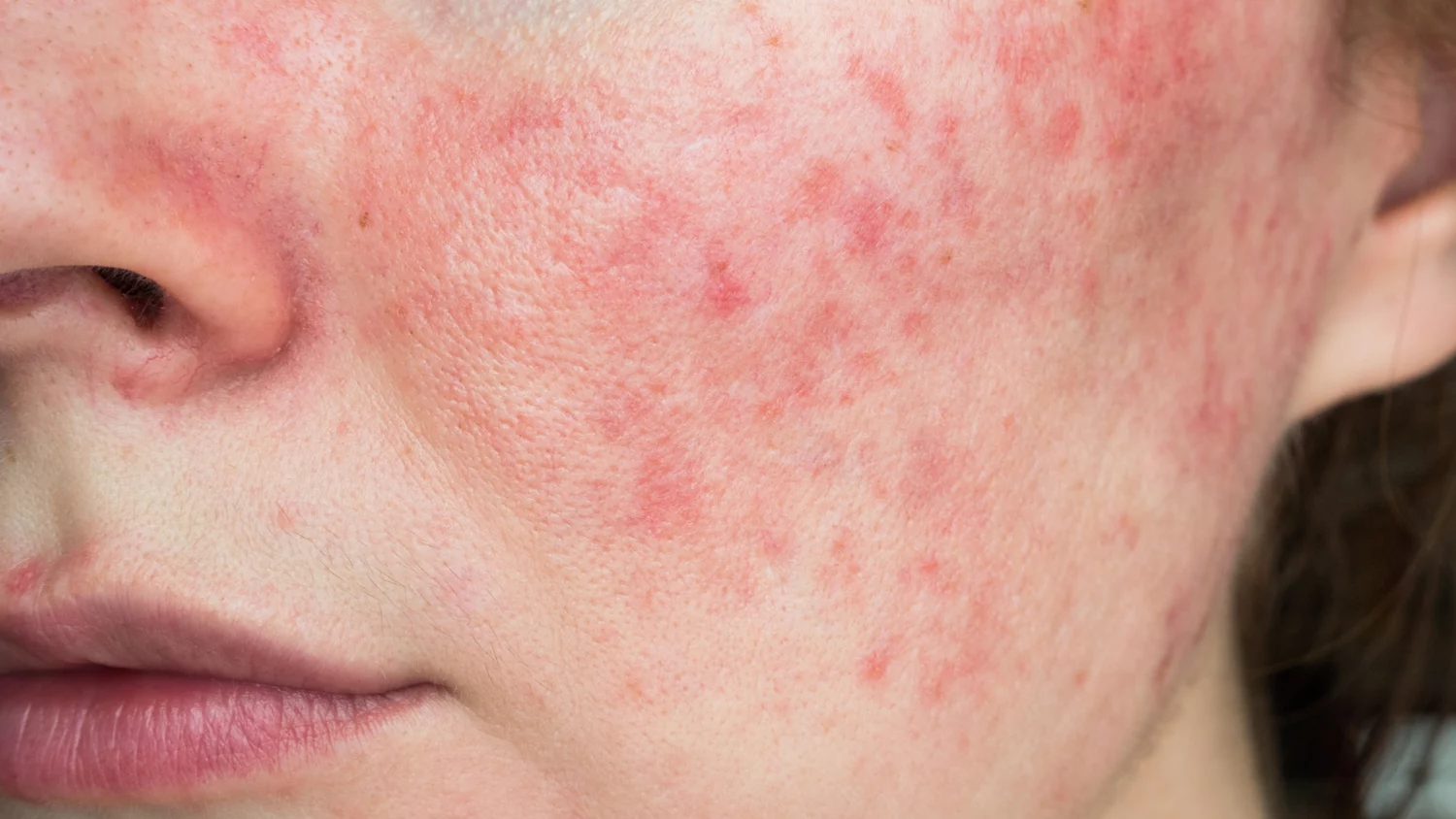
? Non-Typical Symptoms Related to Oily Skin
Some symptoms, while not exclusively indicative of oily skin, can suggest related concerns. For example, flaking skin may indicate a compromised skin barrier, triggering sebaceous glands to overproduce sebum as a defensive response. Persistent redness, though not typically associated with oily skin, could signal rosacea, a condition that can coexist with oily skin. Moreover, individuals may experience both oily and sensitive skin, where the equilibrium has been disrupted by adverse reactions to specific products or environmental factors.
Oily Skin’s Response to Seasonal Changes
Seasonal variations significantly affect the condition of our skin, especially for those prone to oiliness. During summer, elevated temperatures and humidity naturally cause pores to enlarge, rendering the skin more susceptible to external pollutants and prompting the sebaceous glands to increase oil production as a defensive mechanism. Conversely, during winter, fluctuating humidity levels due to cold temperatures and indoor heating can dry out the skin. This dryness stimulates compensatory oil production, resulting in skin that feels both dry and oily, occasionally leading to flakiness and sporadic breakouts.
Skincare Routine for Oily Skin – Essential Steps
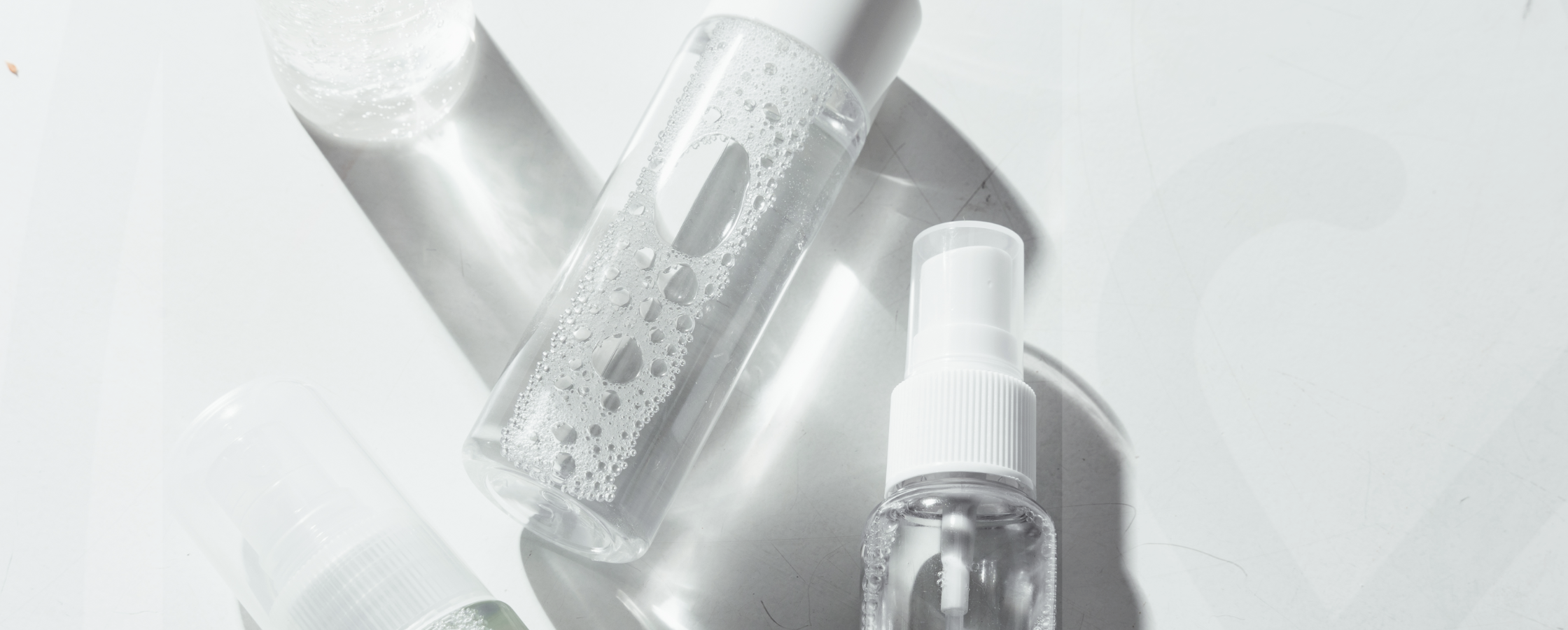
? Step 1 Cleanse
Cleansing is essential in every skincare routine, as it effectively eliminates dirt, sebum and surface impurities from the skin. This step prepares the skin to better absorb subsequent treatments while keeping its pH balance intact. For oily skin, opting for a gentle cleanser is crucial to efficiently remove makeup and accumulated residue without causing pore blockages. It’s wise to steer clear of products containing coconut oil and shea butter, which are recognized for their comedogenic nature. Gels and foams are especially well-suited for oily and combination skin types due to their lightweight formulation, which effectively removes excess sebum and impurities without being overly harsh. These cleansers are ideal for tightening pores and preventing the formation of comedones and breakouts. For dry and sensitive skin, cleansing milk is highly recommended to maintain hydration and softness during cleansing. Its creamy and nourishing texture ensures impurities and makeup are removed without stripping the skin of essential moisture. Contrary to popular belief, cleansing oils are excellent for oily skin as they dissolve makeup and impurities efficiently while keeping the skin hydrated and helping balance sebum production. Lastly, micellar water, with its micelles—tiny particles that attract and trap dirt, oil, and makeup—allows for their removal without excessive rubbing, thus minimizing the risk of irritation.
Note: Although some products claim they can be used without rinsing, it is still advisable to rinse the skin with lukewarm water after application. This step helps to remove any product residues that could mix with makeup and dust particles during cleansing.
? Step 2 Exfoliate
The second step involves applying an astringent toner enriched with exfoliating ingredients such as salicylic acid (BHA) or glycolic acid (AHA). Choose salicylic acid if your skin is oily, acne-prone or tends to get red, and opt for glycolic acid if your skin is oily, combination or normal. These exfoliating agents help to improve skin texture, reduce shine and minimize the appearance of enlarged pores. They also prevent the buildup of sebum and dead skin cells that can cause acne, while reducing any redness.
Bonus
Using an exfoliant once or twice a week is essential to prevent pore blockages, stimulate cell turnover and maintain healthy and visibly purified skin. Chemical exfoliants based on BHA (salicylic acid) are particularly effective for oily skin, as they penetrate into the pores and dissolve sebum, reducing acne and improving skin texture.
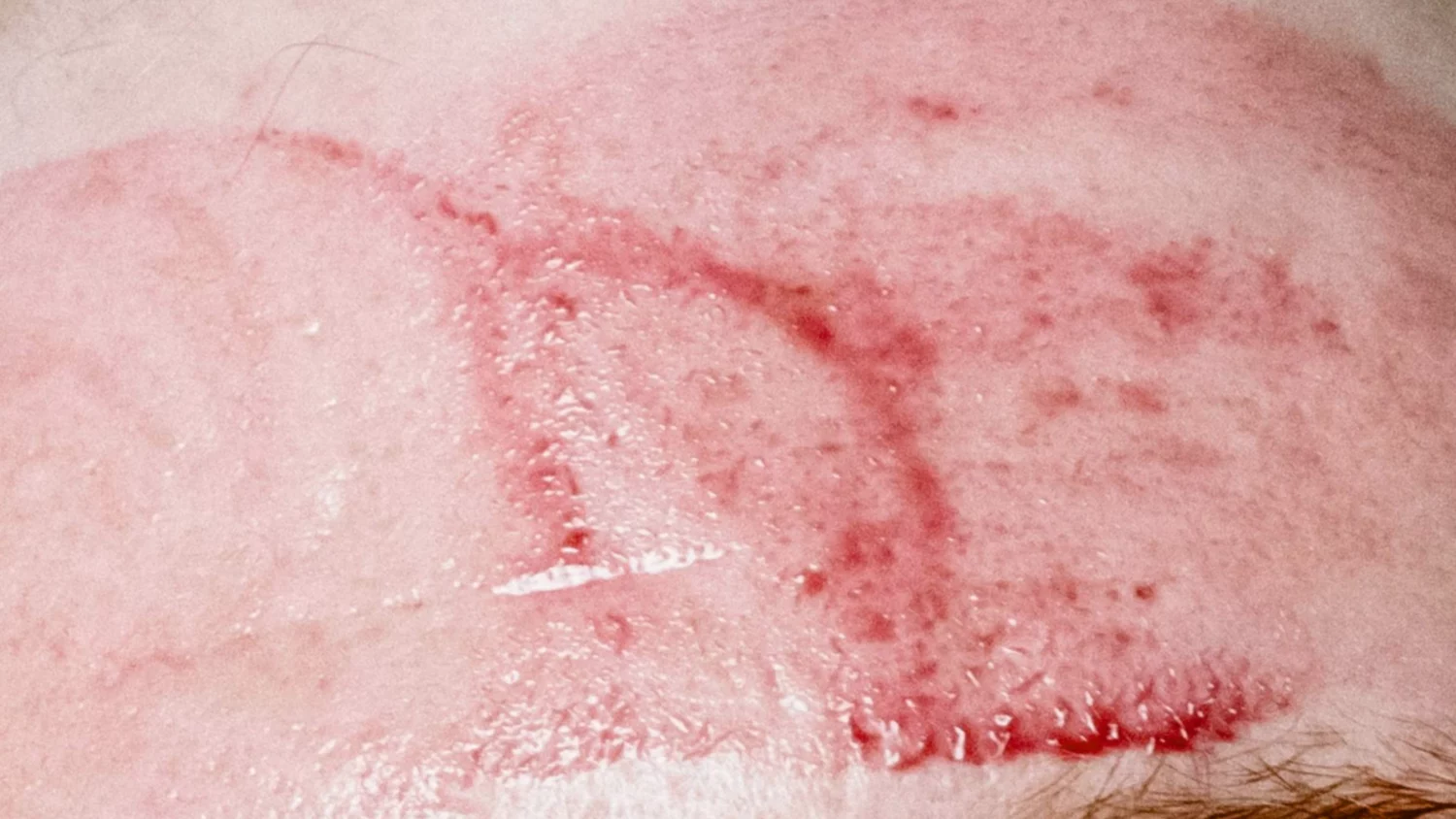
? Step 3 Nourish
The third step consists of applying a serum. Serums are lightweight formulations that penetrate deeply into the skin to deliver concentrated active ingredients. For oily skin, serums containing niacinamide and/or zinc, salicylic acid, or AHA BHA exfoliants (if not already included in the toner application) are ideal. Niacinamide regulates sebum production, reduces inflammation, and improves the skin barrier, providing soothing and purifying action when combined with zinc. Salicylic acid treats skin rashes by penetrating into the pores and dissolving excess sebum, particularly beneficial if you also suffer from dryness and flaking in some areas of the face.
? Step 4 Moisturize
The fourth step is hydration. ingredients like hyaluronic acid or glycerin are ideal as they hydrate without increasing sebum production, preventing the feeling of dry skin that can lead to compensatory oil production.
? Step 5 Protect
Since the application of acids and chemical solutions on the skin’s surface increases sensitivity to sunlight, it’s essential to adopt adequate UV rays protection. This precaution promotes the proper functioning of ongoing treatments and protects the skin from the harmful effects of UV rays, a particularly important step if using exfoliating agents like BHA and AHA at night. Applying daytime sunscreen helps protect the treated skin and prevents sun damage, including aging.
Conclusion
In conclusion, establishing an effective skincare routine for oily skin requires a tailored approach that considers individual responses to environmental changes. Key steps include daily cleansing, targeted exfoliation with acids like salicylic or glycolic and the use of lightweight, hydrating serums. Regular application of sunscreen is crucial, especially when using exfoliating agents, to protect against UV damage and maintain skin health. By integrating these practices, you can manage your natural oil production and enhance your skin’s overall texture and resilience.


